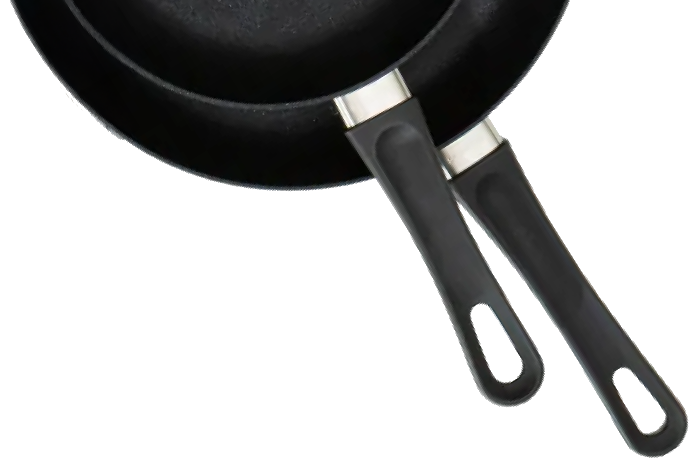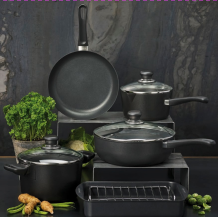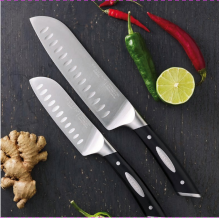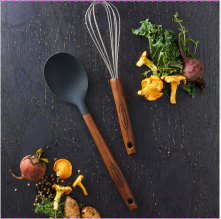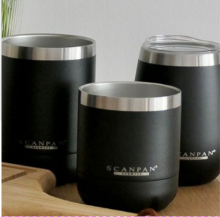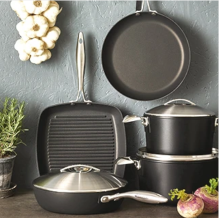Click "Allow Cookies" to consent to storing cookies on your device to improve your experience on our site. Learn more.
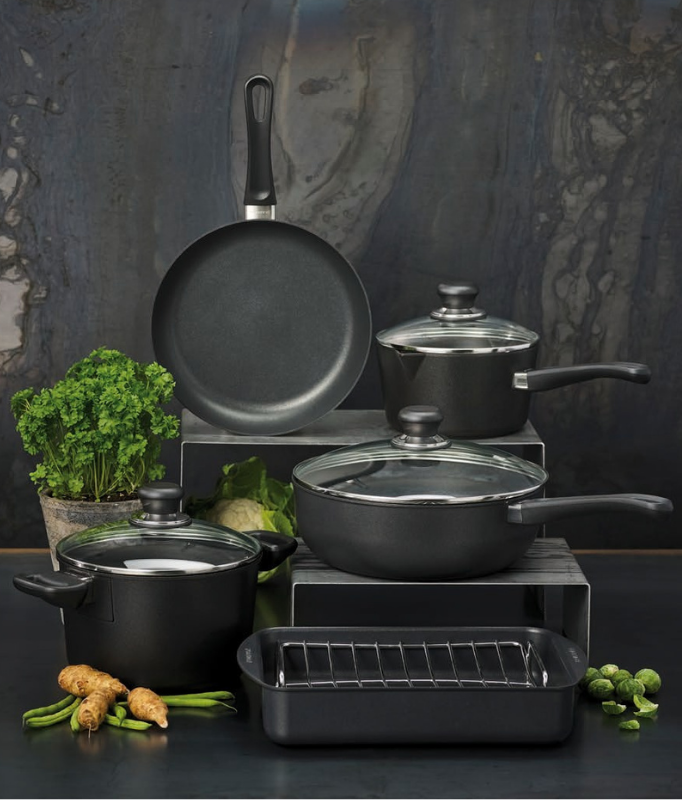
Nonstick
Before first use:
- Remove all labels and wash your product in warm soapy water; dry completely.
- If required, assemble the glass knob according to the directions in the user’s guide.
Never use aerosol sprays or cooking sprays:
- The propellants in this type of nonstick products can impair the nonstick properties of our pans if not properly cleaned after every use – we recommend using your favorite oil, butter or fat for taste as you don’t need to use anything in our nonstick pans if you don't want to.
For best cooking results:
- We recommend heating your pan for 60-90 seconds on medium heat to get the perfect cooking temperature (you'll save energy, too!) at which time your pan will be ready to sear, brown and deglaze!
- If you use your pans on a higher heat, we recommend using a high-heat flash point oil such as grape seed, avocado, rice or vegetable oils for optimum cooking performance.
For a lifetime of use, always do the following:
- Clean & rinse your pan after every use using warm to hot soapy water and sponge.
- Do not be afraid to use a natural bristle or nylon brush to clean with Bar Keepers Friend or any other scouring cleanser for stickier or problematic situations.
- Do not leave any visible or physical food/fat residue in your pan after cleaning; doing so can cause sticking to occur during next use; re-clean, if necessary, using hot water.
- To avoid scratches and scuff marks to the exterior/interior of your pans, do not store directly on top of one another without using some type of divider/protection.
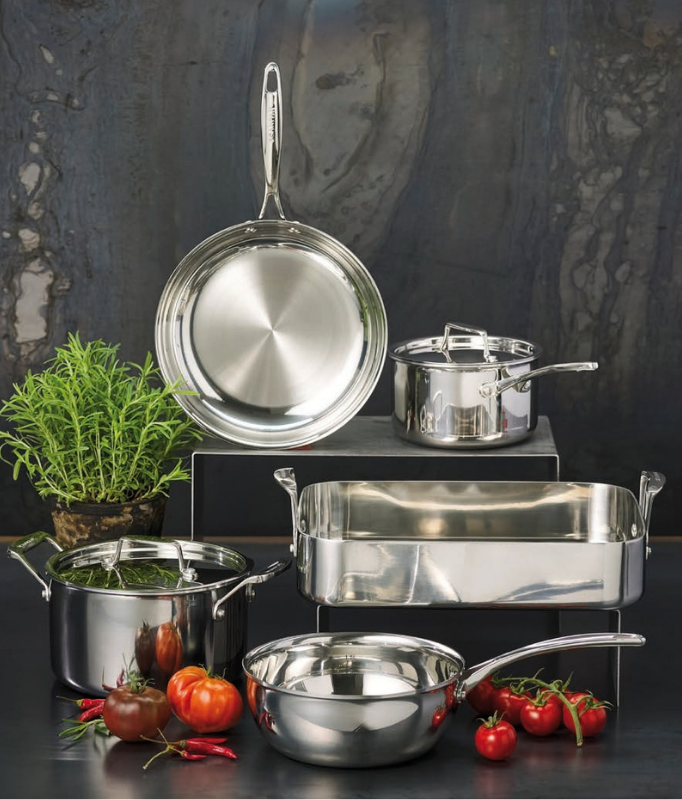
Stainless Steel
Even though stainless steel pans look smooth, the cooking surface actually has tiny pores. When heating the pan the steel expands and the pores shrink. If food is added to the pan too soon it may stick. It takes practice, however once the temperature, timing, and process is right, the risk of food sticking is significantly reduced.
Following these instructions will help you to maximize the life of your stainless steel cookware and minimize the most common problem when working without a non-stick surface – sticking!
Before first use:
- Remove all labels and wash your product in warm soapy water; dry completely.
- If required, assemble the glass knob according to the directions in the user’s guide.
For best cooking results:
- Preheat the empty pan over medium heat for 2-3 minutes.
- As your pan is heating you can check the temperature by using a droplet of water. If the water smokes and sizzles away, your pan is still too cold to use.
- Leave again for another 30-45 seconds and try the water test again – the pan is ready to use when a water ball forms and glides along the interior of the pan.
- A kitchen infrared thermometer works great to make sure the pan temperature is between 375°F and 400°F
- Add oil. Oil will act as a protective barrier between the pan and the food. When the food is added to the pan a reaction occurs between the hot oil and the natural moisture in the food. A steam-like effect is generated which ‘lifts’ the food away from the pan.
For a lifetime of use, always do the following:
- Clean & rinse your pan after every use using warm to hot soapy water and sponge.
- Do not be afraid to use a natural bristle or nylon brush to clean with Bar Keepers Friend or any other scouring cleanser for stickier or problematic situations.
- Try not to move food around. Let the pan and the food do the work. With the exception of diced vegetables that do need to be moved to prevent burning, the food will be released in most cases after a short period of time.
- Do not leave any visible or physical food/fat residue in your pan after cleaning; doing so can cause sticking to occur during next use; re-clean, if necessary, using hot water.
- To avoid scratches and scuff marks to the exterior/interior of your pans, do not store directly on top of one another without using some type of divider/protection.
Removing heat tint from stainless steel pans:
Heat tint is a streaking (usually a bluey brown color) appearing on the surface of the stainless steel. This is most commonly caused by heating the steel too quickly and results in oxidation of the visible surface. This will not damage the pans, nor affect its performance.
- Use SCANPAN Stainless Steel cleaner.
- Alternatively, a natural option using 2 tbs of baking soda mixed with water to a paste can be applied.
- With a soft circular motion using a nonabrasive cloth, gently and slowly remove the marks.
- Never use oven cleaner on your cookware.
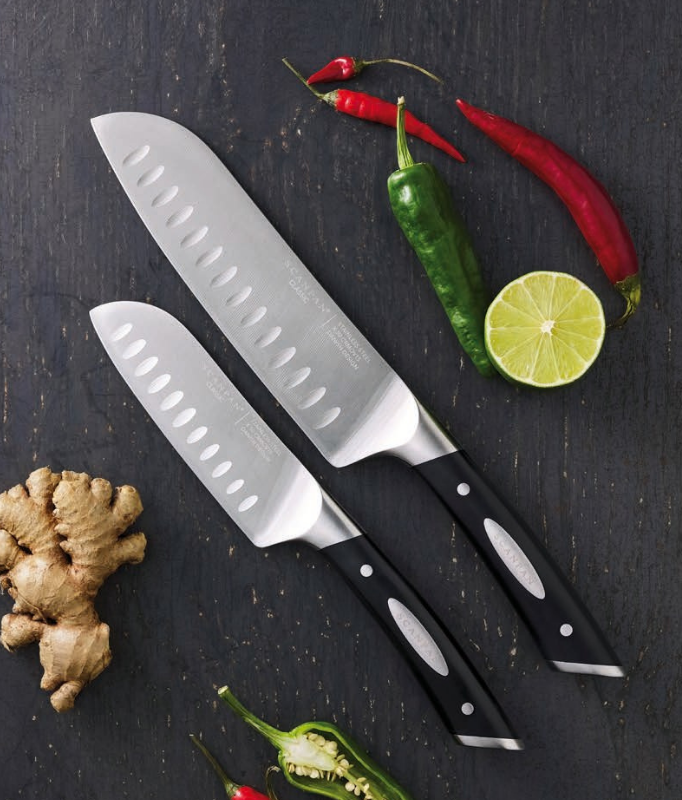
Cutlery
Before first use:
- Remove all labels and wash your product in warm soapy water; dry completely.
For best results:
- Sharpen knives regularly. How often depends on frequency of use. But we suggest at least 2 times a year. Knives can be sharpened at home using a ceramic sharpener or whetstone or find a local professional sharpening service.
- Always use the right knife. Vegetables, meat, fish, cold meats, cheese and bread all have different sizes and textures. That’s why there is a correct knife for each purpose.
- Good knives should NOT go in the dishwasher. SCANPAN recommends cleaning the knife with hot water and soap. Your knives will remain sharp for longer and you avoid any rust film developing.
- Use the knife’s back when scraping the board after chopping, do not use the edge for this – it will blunt your knife.
- Use a knife block or a magnet for storing and protecting your knives. Never store your knives loose in a drawer.
- Cutting on a soft non-abrasive surface will help prevent premature dulling of the blade. SCANPAN recommends soft timber or bamboo cutting boards.
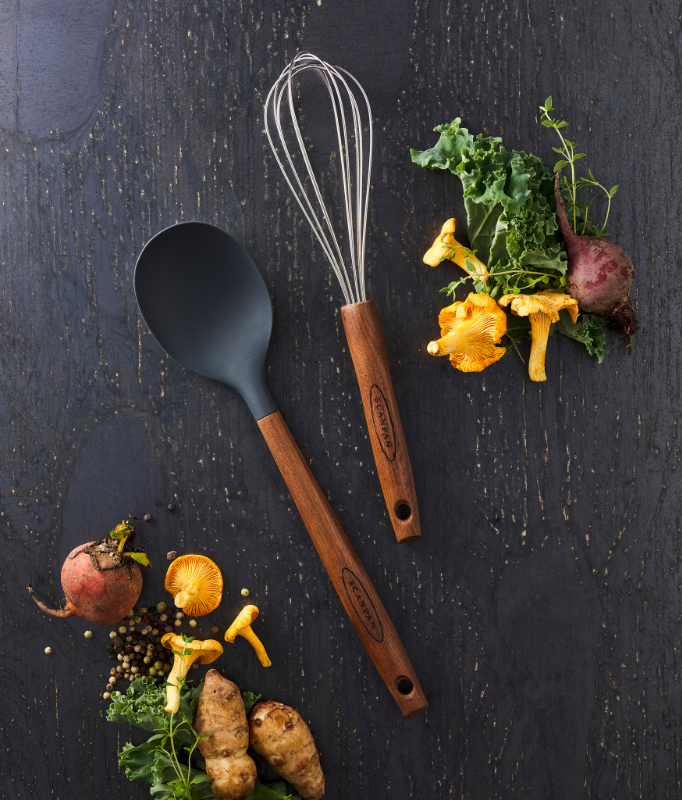
Accessories
Care Instructions for Scanpan Kitchen Tools:
Spatulas and Pastry Brushes: Our spatulas and pastry brushes feature innovative removable silicone heads for thorough cleaning. These silicone heads are dishwasher safe, making cleanup quick and convenient. For best results, we recommend placing the silicone heads in the top rack of your dishwasher.
All Wooden Handles: The carbonized ash handles on all our kitchen tools should always be washed by hand using mild soap and warm water. Be sure to dry the handles immediately after washing to prevent water damage. Never soak or submerge the wooden handles in water for extended periods. Abrasive cleaners or scrubbers should be avoided as they may damage the handle's finish.
Ladles, Whisks, and Other Tools: Unlike our spatulas and pastry brushes, our ladles, whisks, and other tools in the collection do not have removable heads. These items should be hand washed completely with mild soap and warm water. Take care to clean thoroughly around all crevices while avoiding excessive soaking of the wooden handles.
Storage:
Store your Scanpan kitchen tools in a dry place away from direct heat sources. To preserve the beauty and longevity of the carbonized ash handles, avoid prolonged exposure to sunlight.
Care Instructions for Cookware Lids:
SCANPAN lids are either made using quality stainless steel or tempered glass designed to withstand high temperatures (oven safe up to 500°F)
- Never place lid directly on the cooktop. Use extreme caution when removing lids from hot pots to avoid steam burns.
- Always use heat resistant mitts to avoid burns.
- Do not place hot lid on a cold surface.
- Clean your lids in hot soapy water with soft cloth to avoid scratching.
- Handles and knobs are made with high quality stainless steel. Whilst designed to stay cooler for longer, care should always be taken when using equipment where high temperatures are involved - SCANPAN always recommends the use of handle holders, oven mitts and other heat-resistant accessories when cooking.
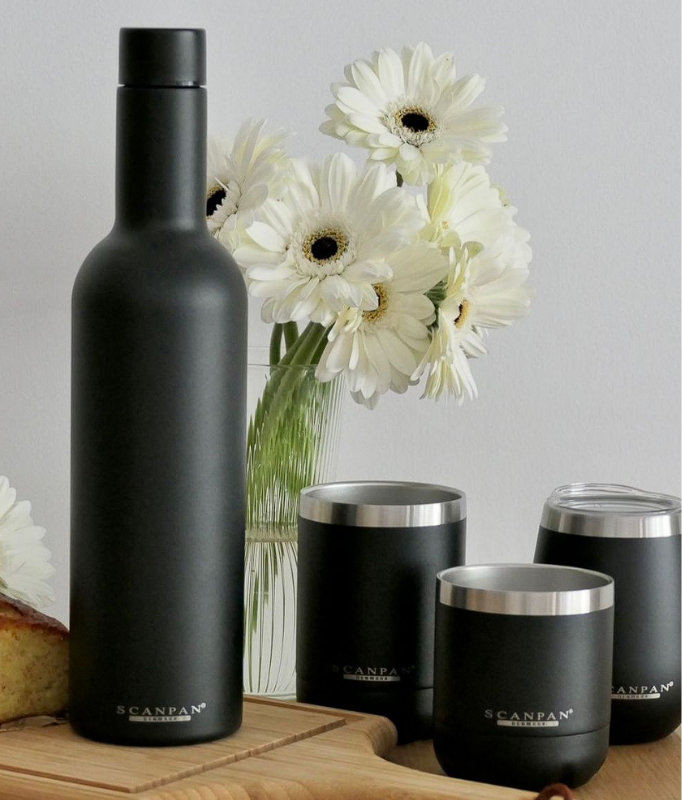
To GO
Our TOGO by SCANPAN drinkware collection is crafted from high-quality stainless steel, making these products both durable and reusable. They are the perfect companions for an active lifestyle, whether you're heading to the gym or simply on the go throughout your day.
For best results:
General Care: While most of our TOGO products are dishwasher safe, we recommend hand washing to maintain optimal quality and extend the lifespan of your drinkware. When cleaning, use mild soap and warm water. Avoid harsh abrasive sponges as they may damage the finish of your stainless steel items.
Bottles, French Press, Travel Mugs, and Tumblers: These items are dishwasher safe and can be placed on the top rack of your dishwasher. However, for maximum durability and longevity, hand washing is preferred.
Wine Bottles: The TOGO wine bottle should be hand washed only. Use warm water and mild soap, then rinse thoroughly and dry completely before storing.
Additional Care Tips:
Always ensure your drinkware is completely dry before storage to prevent any moisture buildup. Periodically check seals and lids for wear and clean thoroughly to maintain proper function.
Storage:
Store your TO GO drinkware in a dry place. If not using for extended periods, ensure all components are completely dry before storing to prevent any odors or mildew from developing.
More Resources

August 14, 2024





